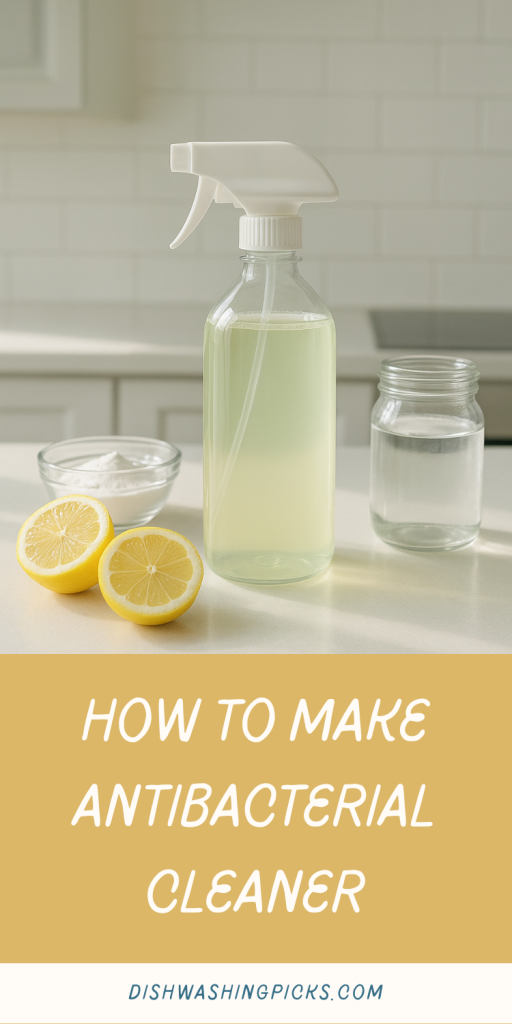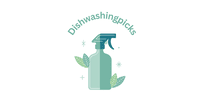
Why Go DIY with Antibacterial Cleaners?
Picture this: you’ve just come home from grocery shopping, and you’re wiping down your counters with a spray you grabbed at the store. You pause for a second, flip the bottle around, and—whoa—there’s an ingredient list that looks like it belongs in a chemistry textbook. Half the names you can’t even pronounce.
Now, here’s the kicker: keeping things clean and bacteria-free doesn’t have to involve mystery chemicals or overpriced brands. In fact, you can make your very own antibacterial cleaner right at home with just a few simple, safe ingredients.
And before you think, “Does homemade stuff even work?”—yes, it does. The secret lies in natural antibacterial agents you probably already have sitting in your kitchen or bathroom. So why not skip the store-bought stress and craft something that’s affordable, effective, and smells amazing?
What Makes a Cleaner “Antibacterial,” Anyway?
Let’s break this down without the science headache.
“Antibacterial” just means it’s designed to reduce or eliminate bacteria. While not all bacteria are bad (your gut would like to remind you of that), the ones hanging out on your counters, sinks, and doorknobs? Yeah, not the kind you want hanging around.
Certain natural ingredients—like vinegar, essential oils, or rubbing alcohol—have properties that help break down bacteria and leave surfaces fresh and safe. The beauty of DIY cleaners is you can mix and match these ingredients to suit your needs without any unnecessary extras.
Think of it like making your own salad dressing: same goal, fewer weird preservatives.
Ingredients You’ll Need (and Why They Work)
Okay, let’s peek into the pantry and bathroom cabinet. Here’s the usual lineup for a homemade antibacterial cleaner:
- White vinegar – acidic and naturally antibacterial. Great for most surfaces.
- Rubbing alcohol (isopropyl alcohol, at least 70%) – disinfects like a champ.
- Castile soap or dish soap – lifts grease and dirt while helping the solution spread evenly.
- Essential oils (like tea tree, lavender, lemon, or eucalyptus) – not just for the spa vibe; many have antibacterial properties.
- Distilled water – avoids streaks and keeps your mix fresh longer.
See? No exotic powders or scary chemical names—just everyday stuff.
DIY Antibacterial Cleaner Recipes
Ready for the fun part? Here are a few simple “recipes” you can try:
1. The All-Purpose Spray
- 1 cup distilled water
- 1 cup white vinegar
- 10–15 drops tea tree or lavender essential oil
Mix in a spray bottle, shake before use, and spritz away on countertops, sinks, and even doorknobs.
2. The Heavy-Duty Alcohol Cleaner
- 1 cup rubbing alcohol (70% or higher)
- 1 cup water
- 1 teaspoon liquid Castile soap
This one’s perfect for disinfecting bathroom fixtures or high-touch areas like light switches.
3. The Fresh Citrus Boost
- 1 cup vinegar
- 1 cup water
- Peel of one lemon or orange (optional: let it sit for a week before using)
Not only does this cut through bacteria, but your kitchen will smell like a citrus grove.
How to Use Your Homemade Antibacterial Cleaner
Here’s the golden rule: spray, sit, wipe.
A lot of people spray and immediately wipe away, but antibacterial solutions need a little contact time to actually work. Let it sit for about 30–60 seconds before wiping. That’s when the magic happens.
Also—be mindful of surfaces. Vinegar is great, but avoid using it on marble, granite, or natural stone (it can etch the surface). For those, stick with the alcohol-based recipe.
Tips and Tricks for Maximum Effectiveness
- Label your bottles. Trust me, once you’ve got multiple DIY sprays around, you don’t want to mix up “window cleaner” and “antibacterial spray.”
- Store in a cool, dark place. Essential oils can break down in sunlight.
- Shake before each use. Natural ingredients tend to separate.
- Keep small batches. DIY cleaners don’t have the preservatives store-bought ones do, so make enough for a couple of weeks at a time.
Clean, Safe, and Totally DIY
At the end of the day, making your own antibacterial cleaner isn’t just about saving money (though that’s a nice perk). It’s about knowing exactly what’s in your spray bottle and feeling confident that it’s safe for your family, pets, and home.
Next time you’re about to grab that big-brand bottle off the shelf, pause and ask yourself: “Could I just make this at home?” Spoiler alert—you absolutely can.
So go ahead, mix up a batch, and give your counters a satisfying, bacteria-busting wipe. Your inner clean freak will thank you.
